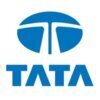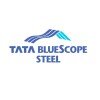Filter interviews by
Arjas Steel Mechanical Maintenance Engineer Interview Questions and Answers
Arjas Steel Mechanical Maintenance Engineer Interview Experiences
2 interviews found
I applied via Naukri.com and was interviewed in Dec 2024. There were 2 interview rounds.
(2 Questions)
- Q1. About equipment list of EAF and LRF
- Q2. Types of pumps
- Ans.
Types of pumps include centrifugal pumps, reciprocating pumps, and rotary pumps.
Centrifugal pumps use a rotating impeller to create flow and increase pressure.
Reciprocating pumps use a piston or diaphragm to create flow and increase pressure.
Rotary pumps use rotating mechanisms to create flow and increase pressure.
Examples include centrifugal pumps in HVAC systems, reciprocating pumps in hydraulic systems, and rotary p
(2 Questions)
- Q1. What is your weakness and strength
- Ans.
My weakness is attention to detail, but my strength is problem-solving skills.
Weakness: Sometimes I can get too focused on the big picture and overlook small details. For example, in a previous project, I missed a minor issue with a machine that caused a delay in production.
Strength: I excel in problem-solving and troubleshooting. I enjoy analyzing complex issues and finding innovative solutions. For instance, I was ab...
- Q2. About your self
I applied via Approached by Company and was interviewed before Aug 2022. There were 3 interview rounds.

(1 Question)
- Q1. About EAF and LRF and FTP
(1 Question)
- Q1. Negotiation for salary
Interview Preparation Tips
- Tharmo dynamic
Top trending discussions






Interview questions from similar companies

I applied via Campus Placement and was interviewed before Apr 2021. There were 5 interview rounds.
Their were 50 questions of aptitude consisting of Maths, science, engineering (electrical+ mechanical)
Their were 10 candidate in my turn..topic was diploma engineers vs Btech Engineers. Everyone give 2 to 3 points .
(1 Question)
- Q1. Electrical as well as Instrumentation engineering basic questions.
(5 Questions)
- Q1. What are your salary expectations?
- Q2. What is your family background?
- Q3. Why should we hire you?
- Q4. Why are you looking for a change?
- Q5. Tell me about yourself.
(2 Questions)
- Q1. In plant again surprised interview consisting of technical+HR.
- Q2. This time the level of questions were quite high and related to steel domain and applied questions or practical life engineering questions, projects based.
Interview Preparation Tips

Assistant Manager Interview Questions & Answers
POSCO MAHARASHTRA STEELposted on 24 May 2021
I appeared for an interview before May 2020.
Interview Questionnaire
2 Questions
- Q1. Tell me something about yourself
- Ans.
I am a highly motivated and experienced professional with a strong background in management and leadership.
I have over 5 years of experience in management roles, including 2 years as an Assistant Manager at XYZ Company.
I have successfully led teams of up to 20 employees, ensuring efficient operations and high customer satisfaction.
I am skilled in strategic planning, problem-solving, and decision-making, which have cont...
- Q2. Please tell me about your 3 strengths and 3 weakness.
- Ans.
My strengths are leadership, problem-solving, and communication. My weaknesses are time management, delegation, and public speaking.
Strength: Leadership - I have a natural ability to inspire and motivate a team, and I excel at guiding others towards achieving common goals.
Strength: Problem-solving - I am skilled at analyzing complex situations, identifying potential solutions, and making informed decisions.
Strength: Co...
Interview Preparation Tips
Secondly, do home work about job profile, company and basics of your study, read your Cv and emove errors if any. Read company reviews before going for interview.
Thirdly, greet interviewer while entering room, reach 15 minutes before interview, seat calm and get you cool at new place. When answering questions do not be over smart, do not lie, do not show attitude in language. Be confident and clear in communication. Try to speak in English only. If required then use local language.

I applied via Recruitment Consulltant

(1 Question)
- Q1. Conveyor Grades, Hydraulic system it's grade tan value, nas value
- Ans. How will you asset for this organisation
(1 Question)
- Q1. What are your achievements, how can you be beneficial for the company.
Interview Preparation Tips
Never lie, please be clear if you don't know

I applied via Naukri.com and was interviewed in May 2024. There were 2 interview rounds.
(2 Questions)
- Q1. Preffered Location
- Q2. Salary expectation
(3 Questions)
- Q1. Sheet pile use in damp & flood area
- Ans.
Sheet piles are commonly used in damp and flood-prone areas to provide structural support and prevent water infiltration.
Sheet piles are driven into the ground to create a barrier against water seepage.
They are often made of steel or vinyl and are interlocked to form a continuous wall.
Sheet piles can be used in cofferdams, seawalls, and flood protection systems.
They are effective in preventing soil erosion and protecti...
- Q2. Wind load calculation
- Q3. Grade of concrete
- Ans.
Grade of concrete refers to the strength of the concrete mix design.
Grade of concrete is denoted by the ratio of cement to sand to aggregate.
Common grades of concrete include M10, M15, M20, etc.
Higher grade concrete has higher strength and durability.
For example, M20 concrete has a compressive strength of 20 MPa.
Interview Preparation Tips

Maintenance Manager Interview Questions & Answers
Tata Steel Downstream Productsposted on 15 Dec 2022
I applied via Naukri.com and was interviewed before Dec 2021. There were 2 interview rounds.

(2 Questions)
- Q1. Hard core technical question? Hydraulic calculations? Bearing types? Electrode type?
- Q2. Bearing types? Alignment methods?
Interview Preparation Tips
Hr questions
Better self intro

Mechanical Engineer Interview Questions & Answers
Tata Steel Downstream Productsposted on 29 Aug 2023

Test in apititude you advise in this better position and most great in company
(5 Questions)
- Q1. Different between Forgings and casting
- Ans.
Forging involves shaping metal through compression, while casting involves pouring molten metal into a mold.
Forging involves shaping metal through compressive forces, while casting involves pouring molten metal into a mold to solidify.
Forging typically results in stronger and more durable parts compared to casting.
Forging is a more precise process that allows for tighter tolerances, while casting is more suitable for c...
- Q2. What is the forgings
- Ans.
Forgings are metal components that are shaped by compressive forces, typically through hammering or pressing.
Forgings are typically stronger and more reliable than castings or machined parts.
Common forging processes include open-die forging, closed-die forging, and ring rolling.
Examples of forged components include crankshafts, connecting rods, and gears.
Forgings are often used in industries such as automotive, aerospa
- Q3. What is the casting
- Q4. Process in casting
- Ans.
Process in casting involves pouring molten metal into a mold to create a desired shape.
Mold preparation is crucial for successful casting
Molten metal is poured into the mold cavity
Cooling and solidification of the metal takes place inside the mold
The casting is removed from the mold and finished as needed
- Q5. Process in forging
- Ans.
Forging is a manufacturing process where metal is shaped by applying compressive forces using a hammer or press.
Metal is heated to a high temperature to make it more malleable
The metal is then placed on a die and struck with a hammer or pressed to shape it
Forging can be done using different techniques like open-die forging, closed-die forging, and impression-die forging
Interview Preparation Tips
Firstly thank you for this opportunity

Mechanical Engineer Interview Questions & Answers
Tata Steel Downstream Productsposted on 6 Apr 2024
(1 Question)
- Q1. Tell me about your most successfuly Engineer project

Mechanical Engineer Interview Questions & Answers
Tata Steel Downstream Productsposted on 4 Feb 2022
I applied via Walk-in
Apply for mechanical Engineer

Technical
Interview Preparation Tips
Arjas Steel Interview FAQs
Tell us how to improve this page.
Arjas Steel Interviews By Designations
- Arjas Steel Mechanical Maintenance Engineer Interview Questions
- Arjas Steel Assistant Manager Interview Questions
- Arjas Steel Security Officer Interview Questions
- Arjas Steel Electrical Maintenance Engineer Interview Questions
- Arjas Steel Maintenance Manager Interview Questions
- Arjas Steel Senior Engineer Interview Questions
- Arjas Steel Manager Interview Questions
- Arjas Steel Electronics Engineer Interview Questions
- Show more
Interview Questions for Popular Designations
- Mechanical Engineer Interview Questions
- Diploma Mechanical Engineer Interview Questions
- Mechanical Technician Interview Questions
- Senior Engineer Mechanical Interview Questions
- Mechanical Supervisor Interview Questions
- Junior Mechanical Engineer Interview Questions
- Mechanical Fitter Interview Questions
- Mechanical Maintenance Fitter Interview Questions
- Show more
Arjas Steel Mechanical Maintenance Engineer Interview Process
based on 2 interviews
Interview experience
Interview Questions from Similar Companies
Arjas Steel Mechanical Maintenance Engineer Reviews and Ratings
based on 1 review
Rating in categories
|
Junior Manager
92
salaries
| ₹3.8 L/yr - ₹9.4 L/yr |
|
Assistant Manager
63
salaries
| ₹5.2 L/yr - ₹11 L/yr |
|
Deputy Manager
63
salaries
| ₹6.2 L/yr - ₹12 L/yr |
|
Senior Manager
47
salaries
| ₹10 L/yr - ₹21 L/yr |
|
Manager
40
salaries
| ₹8.3 L/yr - ₹14.5 L/yr |

ArcelorMittal

Tata Steel Downstream Products

Tata BlueScope Steel

Captain Steel India Limited
- Home >
- Interviews >
- Arjas Steel Interview Questions >
- Arjas Steel Mechanical Maintenance Engineer Interview Questions













